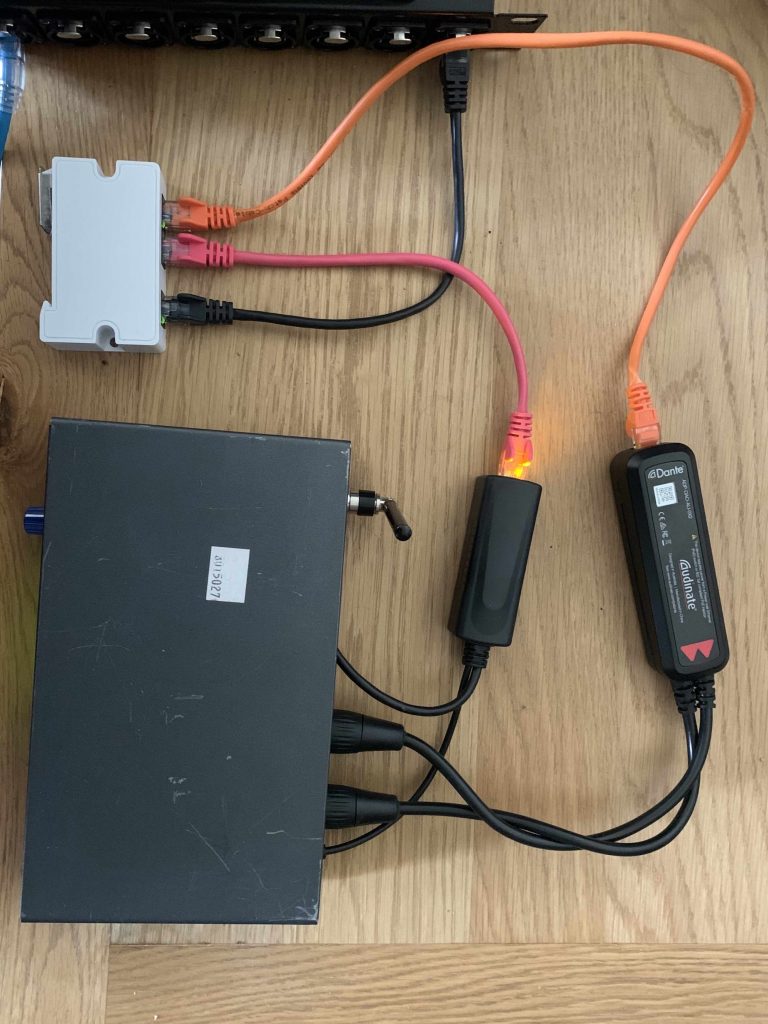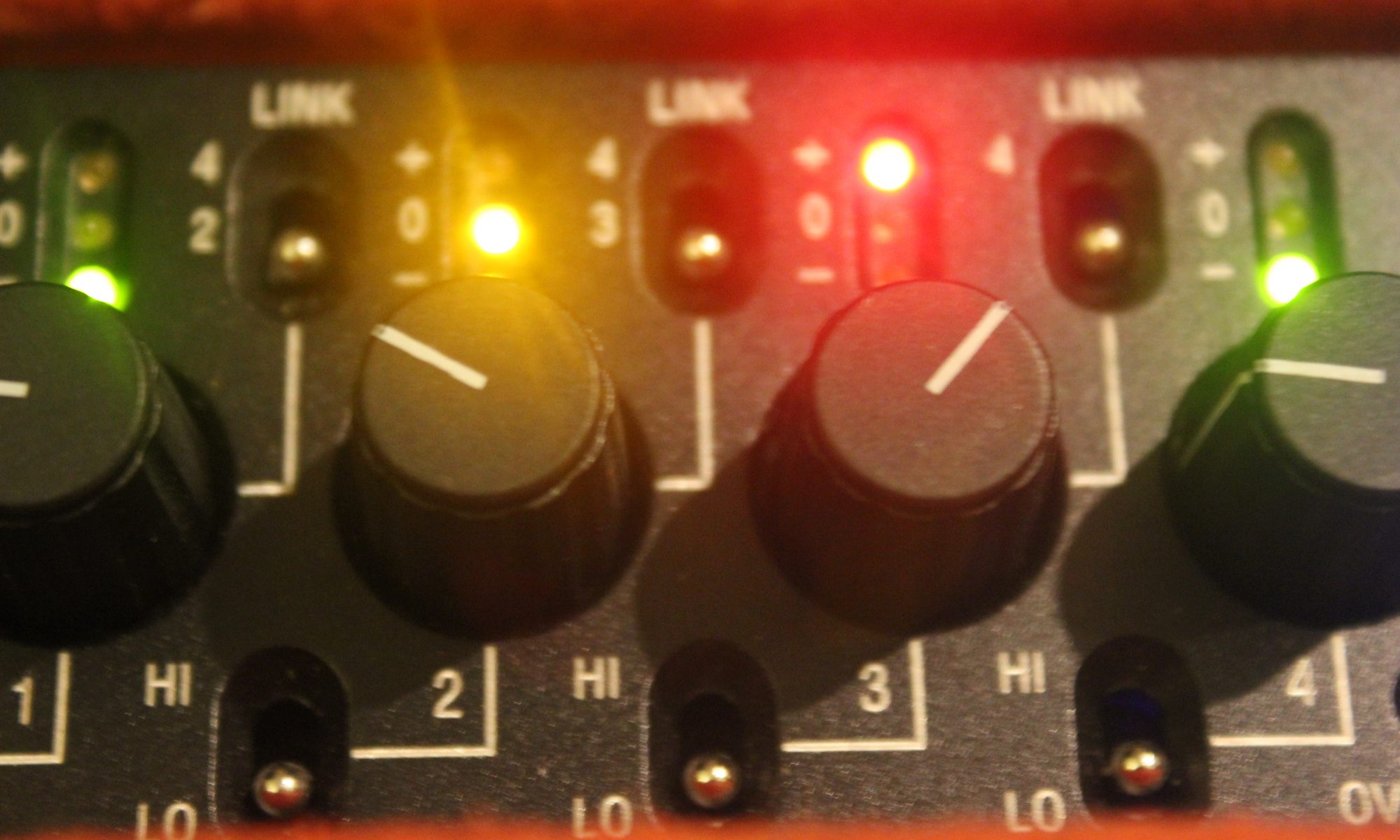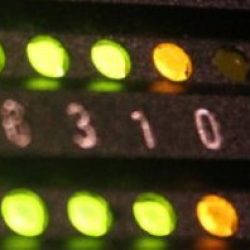Why?
I’m looking into running out a single cable to connect a box to an audio over IP network. For example, a transmitter or receiver to cover a separate area. There are a number of different AOIP standards, which include Audinate Dante, Ravenna and AVB- this is mainly a demonstration of physical connections, but different hardware may be required for different networking standards. This method can be scaled up to devices with more analogue/digital inputs and outputs as long as they can be powered.
Ingredients
You need the following:
Target device with a DC power input (in this case a Sennheiser SR300 G2 transmitter)
Network switch with power over Ethernet (PoE) (Cisco SG250-08HP)
PoE or DC powered AoIP to analogue endpoint (Dante AVIO)
Passive PoE switch (Linovision mini passive switch)
12V PoE Splitter (I used this)
CAT5e cables (or better)
Setup

Here we have the main PoE switch connected to the passive PoE switch, which powers that, which in turn powers both the Dante AVIO and Ethernet splitter. The Dante AVIO runs to 2 XLR outs which plug into the Sennheiser transmitter and the PoE Splitter feeds 12V to the transmitter. It powers up as soon as the main switch has booted up. The PoE Splitter also has an RJ45 connector on. If this was a G3 or later Sennheiser transmitter, this could connect to the data port and the transmitter’s settings could be accessed over the network.
Things to bear in mind
Everything in the network needs a certain amount of power and the PoE switch can only supply a certain amount (usually at 48V). Check the specs for power consumption of devices. Ohm’s law is useful for calculating current at different voltages
Look at the required voltage and current for the device you want to power. Voltage has to be within the specified range, while the supplied current can be more than specified (devices only draw as much current as they require). Check that you can find a PoE splitter that fits these specifications.
There are different PoE standards, the current ones are 802.11af or 802.11at which supply different amounts of power per port. Some things which just say ‘PoE’ without a standard may not play nicely or even damage equipment.
There will be some loss of power through the cable. The reason the voltage is reasonably high (48V) is to reduce the current and associated loss due to heating the cable- the longer and thinner the cable, the greater the loss.
The passive switch used here is only 10/100Mbps, this is fine as the Dante interface is also this speed, but if more channels need to be passed though a 10/100/1000 switch may be required
Your DC powered device may have a different connector to the splitter- it’s possible to chop off the moulded connector and solder on a different one
What’s the passive switch for?
In this case the PoE Splitter converts all the power on the port, so it doesn’t pass through to the RJ45 connector, so 2 network ports are required. This also shows how this could work with a box with a separate network port for control. Bigger passive PoE switches are available, so multiple interfaces could be run from one long cable. All this stuff can go in the back of a rack case with a more robust ethercon connector dealing with the connection with the main switch on a long cable.

